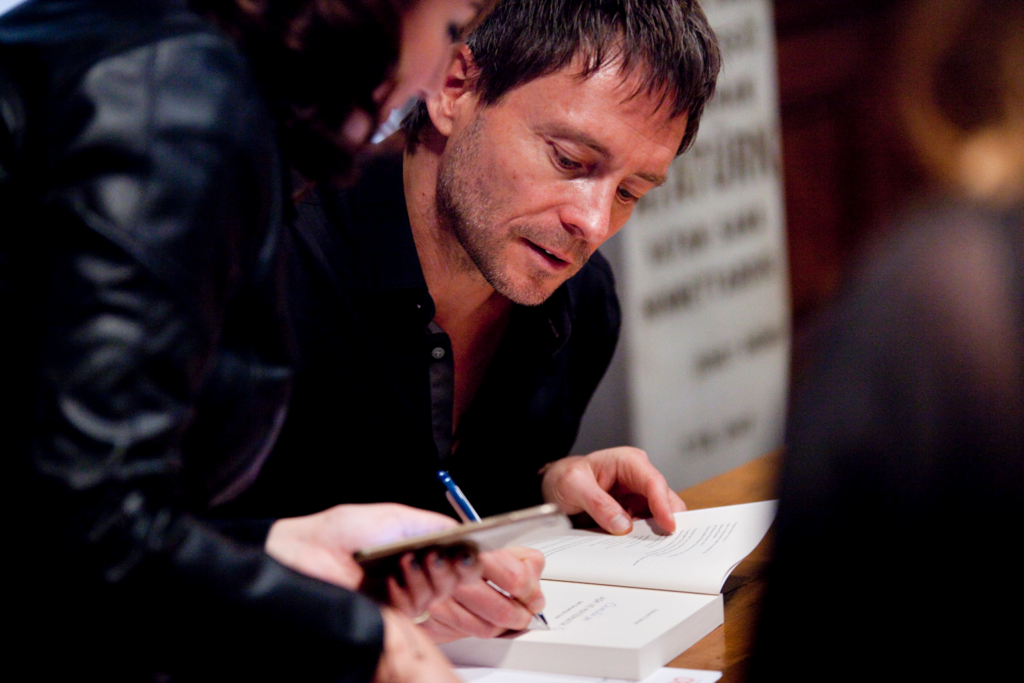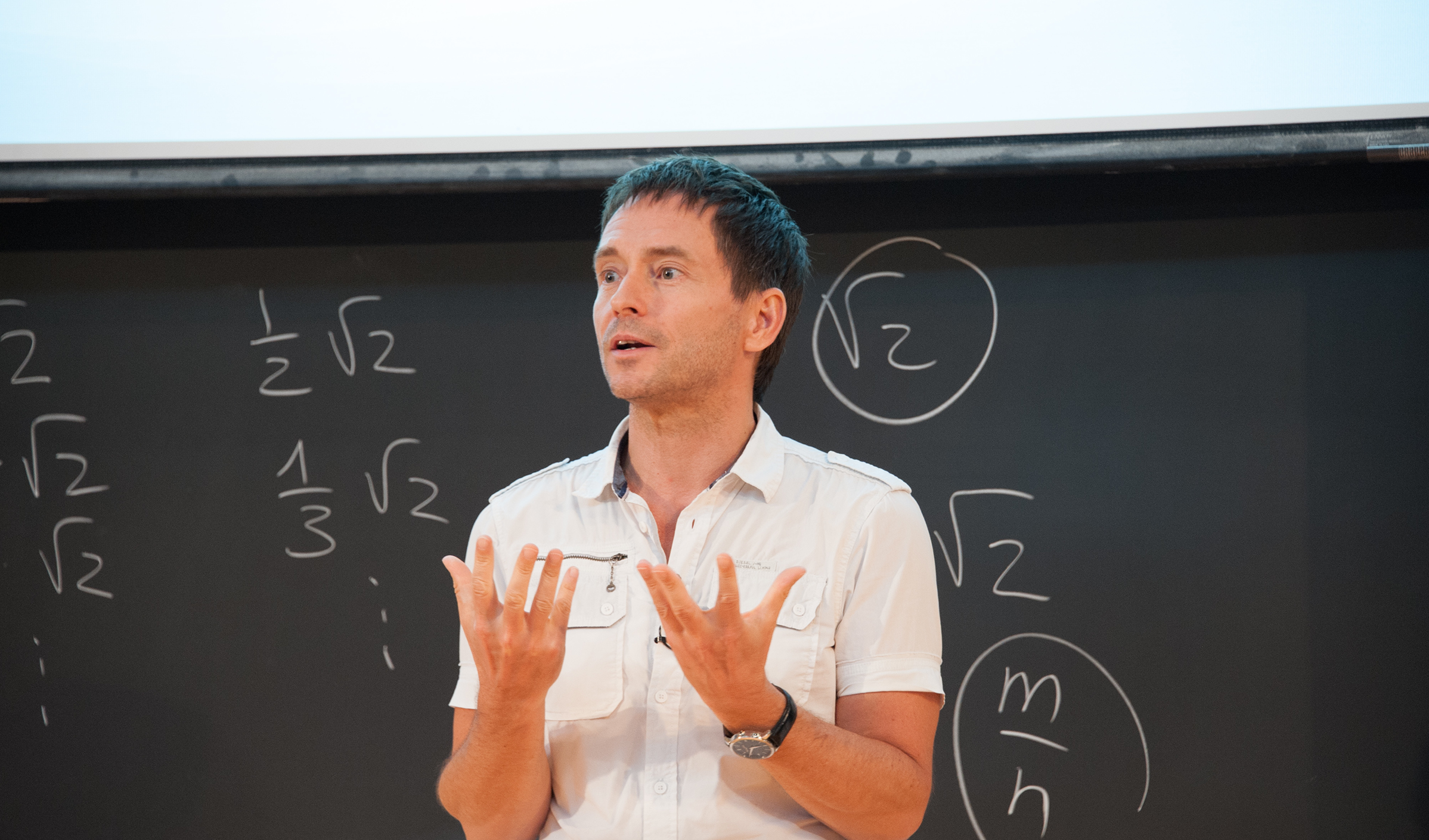
“If we wake up tomorrow and all of the parents — all the grownups — suddenly realize that mathematics is not what’s being studied at school then I guarantee you that the curriculum will be changed,” suggests Mathematician Edward Frenkel. But wait: don’t nearly all schools teach mathematics? Don’t most children learn math in school? And why does a professor of mathematics at the University of California’s Berkeley campus want us to “wake up” and change the way schools teach math?
“Where is mathematics?” Don’t look in the nearest school for the answer to this question. Math “is nowhere you can find it, far beyond the logic of space and time.” Yet Frenkel suggests that math, “the subject that most people think is the most boring, sterile, and irrelevant, actually is a door or a key to … understanding what the world is about.”
Have you played with a Rubiks Cube? Understanding what symmetry groups are might help you solve the puzzle. But you may never hear of symmetry groups in math class. Did you know that geometry helps scientists understand how DNA and proteins work? That groups of numbers called “finite fields” form a system used to create secret codes (cryptography) that protect our privacy? Companies use this math to encode your credit card number when you use it to buy things online.
Mathematicians spend their time studying these types of math, which you probably did not learn about unless you’ve studied math in college or graduate school. Frenkel finds this absurd, pointing out that in most other subjects, students learn about new ideas. Middle school and high school students read novels written in the past few decades in English class and learn about scientific discoveries made in the 20th and even 21st centuries in physics and chemistry. But in math class, you probably spend most — or even all — of your time on topics the ancient Greeks and Romans and medieval Muslims already knew about.
Mathematics, as described by Frenkel in his book Love and Math: The Heart of Hidden Reality, can lead us to think about “questions of truth and beauty.” Far from being limited to solving simple problems with steps presented by teachers, it should be a “journey through different continents” and in fact a whole “magic hidden universe,” “examining mysterious connections.”
When he spoke with Math4Science, Frenkel became our tour guide to the different fields of mathematics, which he suggests we can think of as continents on the planet Math.

Number theory represents one continent. It’s about studying all sorts of numbers, from the natural numbers a very young child learns to count {1, 2, 3, 4, …} to fractions (e.g. ½ or ⅔), integers {…, -4, -3, -2, -1, 0, 1, 2, 3, 4, …} and even “imaginary” or complex numbers involving the square roots of negative numbers. On this “continent” are also many different relationships (expressions and equations) between numbers.
Geometry is another continent in the universe of math. Not just made up of the points, straight lines, angles, and flat planes high school geometry classes usually focus on, geometry includes surfaces that bend, such as a sphere or a hyperboloid: “Look: We have curvy triangles there!” The world of curves can seem “more fascinating because in some ways it is closer to our experience. After all, the Earth isn’t flat,” Frenkel says.
And the mathematical universe contains many more continents. “For instance harmonic analysis,” the study of waves or signals of sound, electricity, etc. When a person listens to music, s/he may hear “many different instruments, notes combining together to produce the sounds of a symphony.” “Each note can be represented by a trigonometric function, such as sine and cosine. These are the basic harmonics.” Mathematicians like Frenkel who study harmonic analysis also work with “signals much more complicated than sound waves.”
For Frenkel, one of the most exciting things about studying math is finding connections between different fields. You might not assume that harmonics would teach you how to solve a particularly difficult problem number theorists or geometers work on. Numbers, shapes, and signals moving in waves “seem to be very different.” “But there are many connections between them [and] my work is about finding those connections and exploring them.” And when Frenkel and his colleagues discover those links, they help uncover what many of them consider “the unity, the Oneness” of mathematics. The links they find can also make math easier — seemingly impossible problems in number theory are sometimes “easier to solve when we translate them into problems in harmonic analysis.”

Frenkel would like math students, even very young ones, to learn more about the mysterious world of mathematics, with its different continents and the sometimes surprising connections among them. One of the people who discovered some of these connections is Robert Langlands, a Canadian-born mathematician who now works in the office of Albert Einstein at the Institute for Advanced Study in Princeton, New Jersey. But unlike Einstein, he is not very famous among non-mathematicians.
Many mathematicians study and add to the connections Langlands discovered between different areas of mathematics, working on what has become known as the Langlands Program. One of the Program’s successes, which you may have heard of, is Fermat’s Last Theorem, a problem that mathematicians worked on for over 350 years.
In recent years, Frenkel has been looking at connections between the Langlands Program and quantum physics (to learn more about quantum physics, check this out). “Most of us have heard about protons, neutrons, and electrons, which are the building blocks of every atom. But very few people know about other elementary particles and their interactions.”
Growing up in the Soviet Union, Frenkel found math reasonably easy but not particularly interesting. “I hated mathematics because what we studied at school seemed cold and sterile and irrelevant.” But he was fascinated by quantum physics, “curious about the fundamental nature of reality,” and eager to learn about elementary particles: the tiniest, most basic stuff that makes up the world around us.
When I was 16, it looked like I had no future in mathematics. The doors were shut. But I did not give up. And guess what: just five years later, I was invited to Harvard as a visiting professor. I was able to fulfill my dream. If you follow your passion and work hard, you will succeed.
A friend of Frenkel’s parents, a mathematician, used Edward’s interest in physics to “invite me into the world of mathematics.” Edward was fascinated by quarks, the particles that are the constituents of protons and neutrons. But he did not know how physicists were able to figure out that quarks existed. Then his mathematician friend showed Edward a book full of diagrams and equations. He said: “You think what they teach you at school is mathematics?” And then he shook his head and pointed to the book: “This is mathematics.” Though Edward could not possibly understand the book at the time, it was clear to him that it contained what he was searching for. “This was the moment I fell in love with math.”
There would be obstacles along the path that led Frenkel to become an accomplished mathematician, which you can read about in his book Love and Math and learn about on his website. His father is ethnically Jewish. Because there was discrimination against Jewish students taking the entrance exams to Moscow University at that time (the mid-1980s), Frenkel was unable to become a student there. But he found ways around these obstacles and is now working hard to help students throughout the world overcome problems that prevent them from learning and fully appreciating mathematics. “Luckily, here in the US, there isn’t discrimination of the kind I experienced in the Soviet Union. But I feel that our school education system shortchanges our kids because our math program is so limited. It’s like only teaching students in an art class how to paint fences and walls and never showing them Van Gogh or Picasso. I believe it is very important to let everyone know that mathematics is a much bigger and much more fascinating subject than most of us are led to believe. Not everyone will pursue math as a profession. But at least students will know how beautiful the subject is and so they will not develop hate or fear toward it.”
Frenkel’s message to you? “When I was 16, it looked like I had no future in mathematics. The doors were shut. But I did not give up. And guess what: just five years later, I was invited to Harvard as a visiting professor. I was able to fulfill my dream. If you follow your passion and work hard, you will succeed.”


